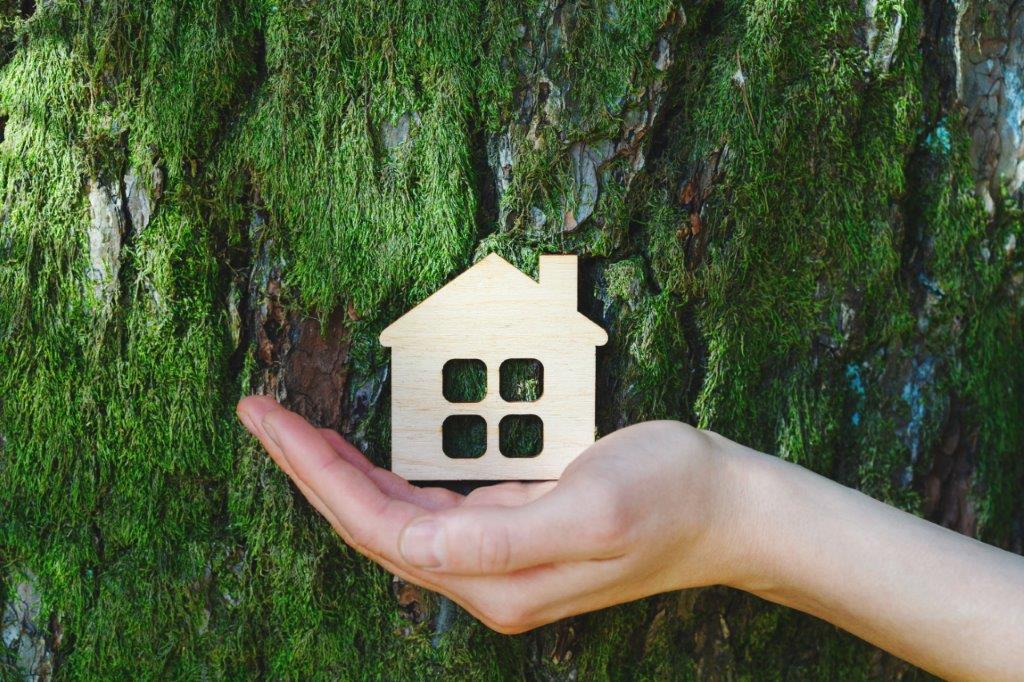
Functional, Healthy Home Remodeling Trends in the New Era
We’re tired of staring at the same four walls, and the home remodeling industry reflects that.
Home remodeling is poised to grow 5% in 2021 with King and Pierce county among the nation’s highest spenders. Here are a few reasons why:
- Seattle-Tacoma-Bellevue real estate is projected to increase 9.7% in 2021, the 2nd highest in the US
- The pandemic has driven a high demand for stable large-scale remodeling
- Seattle’s cumulative total for repair-and-replace spending is forecast to grow 23% from 2020-2023
Not only are we making drastic changes in our homes – these changes are being made with purpose. For home remodelers, balancing aesthetics and function is more important than ever. Functional homes follow Universal Design principles, maximize your storage space and flow, and makes your home healthier.
Many of us are thinking about our health in ways we haven’t thought about before. Nowadays, ensuring that we have a healthy living space is an absolute necessity. In fact, 83% of home builders and remodelers believe that consumers will pay more for healthier homes. There are many reasons why, and we’ll talk about many of them here.
In this post we’ll cover:
- The importance of home functionality
- The hard truths about our home health
- Home remodeling trends that are on the rise

The Importance of Home Functionality
When savvy home designers strike a balance between aesthetics and functionality, there’s a significant return on investment that goes way beyond selling price. Functionality means different things to different people, but it’s usually a combination of several ideas:
- Universal Design principles
- Maximized storage space
- Defined spaces and effortless flow
- A healthy home
Universal Design
Universal design is the design and composition of an environment that can be accessed, understood, and used by all people regardless of their age, size, ability, or disability. In other words, it’s a design that can accommodate all ages and lifestyles.
Universal Design is particularly important when it comes to aging in place. Over the next 40 years, the US population is over age 65 is expected to double from 40 to 80 million, while the population over age 85 will more than triple from 6 to 20 million. Most homes are not currently meeting the needs of our seniors. Simple decisions like choosing door levers over doorknobs, installing softer, smoother surfaces, and providing enough clearance for walkers and wheelchairs reduce the risk of injuries and make life easier for those who are aging in place.
Maximized Storage Space
A functional home maximizes its available space – including your vertical space. Elevate your art, belongings, and storage will give you more surface area and floor space to work with.
Get creative. Build or buy more shelving units to fit your unique spaces. Hang your skis or bike on a wall, make a crown molding shoe rack, or create a staircase that doubles as a bookcase. Also, remember that your prime real estate is the height between your knees and your shoulders, so keep your most frequently used items in that range.
Defined Spaces and Effortless Flow
Functional homes have defined spaces and a good flow. There need to be key indicators that tell you and your guests where your dining room ends and your living room begins. This is easily done by rearranging furniture or accessories in a smart way, or using plants as dividers. Whatever you do, make sure that you’re using each room for its intended purpose.
An effortless flow is a must for a functional home as well. Are you able to walk around without bumping into a lamp or a futon? Are items you use frequently easily accessible? Measure your space and your furniture and sketch up a floor plan before redecorating. You’ll want to make sure that your design each room for optimal flow.
A Healthy Home
Last but not least, functional homes should be healthy. Unfortunately, many of our homes aren’t nearly as healthy as we think, which brings us to our next section:
Hard Truths About Our Home Health
We spend nearly 90% of our time indoors where we are exposed to pollutants at 2-5 times higher levels than outside. According to the EPA, a six room house collects an average of 40 pounds of dust, which can be laced with upwards of 45 toxic chemicals in a single year. These chemicals can lead to a plethora of health problems ranging from headaches and chest pain to aggravated respiratory diseases such as asthma, bronchitis, and emphysema.
Older homes are a particular nuisance when it comes to air quality. Kathleen Walsh of Reality Home Inspection states that additional issues related to the age of the home may include “knob and tube or aluminum wiring, paint containing lead, and materials containing asbestos.”
The air quality of major US metropolitan areas tends to reside in the 100-to-150 range, which is considered unhealthy for sensitive groups. The sources of indoor air pollution are not always what you may think. Sure, smoking or burning fuel indoors are damaging to your home’s air quality, but there are many other contributors, including your:
- Cleaning products
- HVAC systems
- Gas appliances
- Furniture
- Flooring and carpeting
- Beauty and personal care products
- Air fresheners (ironically enough)
- And much more
How to Improve Your Indoor Air Quality
Clean air not only smells nice and feels soothing on our skin, but it also helps promote good health. Here are a few home remodeling ideas – both big and small – to improve your indoor air quality.
Switch from Gas to Electric
Electric appliances, such as induction stove tops and heat pump water heaters are non-polluting and less expensive to operate compared to their gas counterparts. For example, heat pump water heaters can slash water heating energy by as much as two-thirds! If you prefer gas appliances, make sure that they are vented according to code and that your CO alarm is properly installed. Also, check for gas leaks. Even a small leak can make a big impact.
Use Your Cooking Vents
When you’re cooking, you’re releasing carbon monoxide, nitrogen dioxide, and other harmful contaminants into your home. These air pollutants are more prevalent in gas stoves, but electric burners produce them as well. Turn on your kitchen vents or open a window when you’re cooking, otherwise these particles can be absorbed into your bloodstream.
Air Seal Your Home
Air sealing helps keep outdoor air pollutants and radon from seeping into your living space. It also saves you money on heating and cooling costs and improves your home’s durability.
Air leakage occurs when outside air enters and conditioned air leaves your home controllable through various cracks and openings. Caulk and weatherstrip doors and windows that leak air. Also, seal air leaks where plumbing, ducting, or electrical wiring comes through your ceilings, floors, and walls. To get a full breakdown of where you should be sealing your home and how, we recommend getting an energy audit.
HVAC Repairs
If your air conditioner, heater, or air ducts aren’t fully functioning, you should get them repaired or replaced altogether. Doing this will improve your air quality, limit wasted energy, and reduce your utility bill.
Clean Rugs and Carpets
Your rugs and carpers double as air filters by trapping dust and others particles in their fibers. By cleaning them regularly, they can continue to work effectively.
Buy Indoor Plants
Not only do plants add life to your home – they also improve your air quality. They’re basically living air filters and are great at pulling contaminants out of the air. Ferns, ficus, and palms can all be helpful here.
By following these home remodeling tips, you’re on your way to having a healthier home.
Home Remodeling Trends That Are on the Rise
Two huge home remodeling trends that are likely to continue through 2021 and beyond are large scale remodeling projects and a smaller budget, sustainable, natural decor.
Large Scale Remodels
We’re experiencing a strong seller’s housing market, which continued even through the typical dormant holiday season. Bidding wars are becoming more and more commonplace, and for every winner there’s at least one loser. The market has inspired buyers and sellers alike to invest in large scale remodeling projects.
For sellers, upgrading their home to “move-in ready” promises a great return on investment. Meanwhile, buyers who are struggling to purchase “move-in ready” homes that are within their price range are becoming more open to buying fixer-uppers. While labor-intensive and time-consuming, you can remodel these fixer-uppers to best fit your needs and keep up with the current trends.
Kitchens and bathrooms typically generate the most ROI and have been received extra attention. In 2021, people are focused on making these rooms more soothing, spacious, and functional.
Color schemes for kitchens are going in two vastly different directions right now: muted pastels or matte black. For bathrooms, neutrals in whites are grays remain popular. For fixtures, stainless steel and brushed or satin nickel are still in style, as are matte black finished and brushed gold. Basically, matte-anything is trending right now.
Another ongoing trend is the interest in smart appliances and integrated technology. Basically, if it can be controlled by your smartphone, people want it.
Smaller Budget Remodels
There are several budget-conscious remodeling trends to look out for as well. Healthy, functional design is popular no matter what how simple or ambitious your remodel is. For smaller updates, there’s also an emphasis on sustainability, environmentally-friendly items, and intelligent technologies.
Many people are focused on reusing or repurposing their furniture and accessories. There’s also a booming interest in buying higher quality pieces. Even though they may cost more, they tend to last longer. Thrift shopping for vintage or recycled items is also popular and is a great way to decorate on a budget.
Indoor plants and gardening continues to grow in popularity during the pandemic. Not only are plants great for indoor air quality, but having living things in your home tends to brighten your mood.
Modular spaces are also trending in 2021. According to Inhabitat, modular spaces have the ability to create a fully hybrid experience in a smaller area. They have environmental benefits in terms of construction as well. Along with modular spaces, minimalism is gaining more popularity – especially with products that are made by hand or natural materials.
The pandemic has made us all think about our health and our surroundings. The best way to improve upon those things is to start by working within the four walls we live in.
FAQS
- What is the difference between functional and modular design?
Functional design assures that each modular part of a device has only one job and performs that job with little to no effect on other modular parts. Modular design is an approach for product design where you combine or integrate smaller parts that are independent of each other. When these parts all come together, the form the final product.
- What are the qualities of a healthy home?
Healthy homes have many qualities. Here are a few:
-
- Dry
- Clean
- Ventilated
- Pest-free
- Contaminant-free
- Safe
- Well-maintained
- What is indoor air quality?
Indoor air quality is how the air in a person’s home, workplace, or other indoor location can affect their health and comfort.
- What factors impact indoor air quality?
According to the Occupational Safety and Health Administration (OSHA), indoor air quality is impacted by poor ventilation, humidity, water damage, mold, chemical exposure, temperature, and air seals.
- What is radon and how can it impact my health?
Radon is a colorless, odorless, invisible gas that can only be detected through having your home tested for it. Radon typically enters the home through cracks in foundations and solid floors, construction joints, cracks in walls, gaps in suspended floors, wall cavities, or the water supply. It is proven to cause cancer, usually lung cancer.

